
伤口世界

- 星期四, 13 2月 2025
Holistic investigation of the anti-wrinkle and repair efficacy of a facial cream enriched with C-xyloside
Shanshan Zang PhD | Juanjuan Chen MS | Cyril Chevalier MS | Ji Zhang MS | Shumei Li MS | Hequn Wang PhD | Jing Li MS | Yangdong Chen MS | Hongling Xu MS | Le Sheng MS | Zhiming Zhang MS | Jie Qiu PhD
L' Oreal (China) Research and Innovation Center, Shanghai, China
Correspondence
Jie Qiu, L' Oreal (China) Research and Innovation Center, Shanghai, China.
Email: 该Email地址已收到反垃圾邮件插件保护。要显示它您需要在浏览器中启用JavaScript。
Abstract
Objective: To investigate the repairing and anti-wrinkle efficacy of the facial cream enriched with C-xyloside, aiming at comprehensively evaluating its skin anti- aging effect and clarify its potential mechanism of action.
Methods: The repairing efficacy was studied on 3D epidermis skin model and the antiaging efficacy was studied on ex-vivo human skin. Two clinical studies were conducted with Chinese females. In the first study, 49 subjects aged between 30 and 50 with wrinkle concerns were recruited and instructed to apply the investigational cream containing C-xyloside for 8 weeks. Wrinkles attributes were assessed by dermatologist. Instrumental measurements on skin hydration, trans-epidermal water loss (TEWL), and skin elasticity were also conducted. In the second study, 30 subjects aged between 25 and 60 with self-declared sensitive skin and facial redness were recruited and instructed to apply the cream for 4 weeks. Biomarker analysis of the stratum corneum was conducted through facial tape strips.
Results: The cream improved the histomorphology of the 3D epidermis skin model after SLS stimulation, and significantly increase the expression of LOR and FLG. On human skin, the cream improved the histopathology induced by UV, and significantly increased the protein content of COL I and COL III, collagen density and the number of Ki-67 positive cell of skin compared with model group (n= 3, p< 0.01). The results from the first clinical study demonstrate a significant increased the skin hydration and elasticity by 21.90%, 13.08% (R2) and 12.30% (R5), respectively (n= 49, p< 0.05), and the TEWL values decreased by 33.94% (n= 49, p< 0.05), after 8 weeks application of the cream. In addition, the scores for nasolabial folds, glabellar wrinkle, underneath eye wrinkles, crow's feet wrinkle and forehead wrinkle in the volunteers exhibited a significant reduction of 34.02%, 43.34%, 50.03%, 33.64% and 55.81% respectively (n= 49, p< 0.05). The (rCE)/(fCE) ratio of volunteers based on tape stripping significant increased after using the sample cream (n= 30, p< 0.05).
Conclusion: The cream containing C-xyloside showed improvement of skin wrinkles and enhancement of skin barrier function. These efficacies may be attributed to the fact that the sample cream can increase the expression of skin barrier related proteins LOR and FLG, promote the maturation of cornified envelope, enhance collagen I and III protein expression and stimulate skin cell proliferation, to provide sufficient evidence supporting its antiaging efficacy of skin.
KEYWORDS
anti-wrinkle/repairing/antiaging, C-xyloside, in vitro, skin barrier, tape stripping
Shanshan Zang and Juanjuan Chen were authors contributed equally to this work.
This is an open access article under the terms of the Creative Commons Attribution License, which permits use, distribution and reproduction in any medium, provided the original work is properly cited.
© 2024 The Author(s). Journal of Cosmetic Dermatology published by Wiley Periodicals LLC.

- 星期三, 12 2月 2025
Biologically Active Sheep Colostrum for Topical Treatment and Skin Care
Kinga Kazimierska 1 , Ilona Szabłowska-Gadomska 2 , Stefan Rudzi ´nski 2 , Katarzyna Ko´sla 3 , Elzbieta Płuciennik ˙ 4 , Łukasz Bobak 5 , Aleksandra Zambrowicz 5 and Urszula Kalinowska-Lis 1,*
1 Department of Cosmetic Raw Materials Chemistry, Faculty of Pharmacy, Medical University of Lodz, 90-419 Lodz, Poland; 该Email地址已收到反垃圾邮件插件保护。要显示它您需要在浏览器中启用JavaScript。
2 Laboratory for Cell Research and Application, Center for Preclinical Research and Technology, Medical University of Warsaw, Banacha 1b, 02-097 Warsaw, Poland; 该Email地址已收到反垃圾邮件插件保护。要显示它您需要在浏览器中启用JavaScript。 (I.S.-G.); 该Email地址已收到反垃圾邮件插件保护。要显示它您需要在浏览器中启用JavaScript。 (S.R.)
3 Department of Molecular Carcinogenesis, Medical University of Lodz, 90-419 Lodz, Poland; 该Email地址已收到反垃圾邮件插件保护。要显示它您需要在浏览器中启用JavaScript。
4 Department of Functional Genomics, Medical University of Lodz, 90-419 Lodz, Poland; 该Email地址已收到反垃圾邮件插件保护。要显示它您需要在浏览器中启用JavaScript。
5 Department of Functional Food Products Development, Wroclaw University of Environmental and Life Science, 51-640 Wrocław, Poland; 该Email地址已收到反垃圾邮件插件保护。要显示它您需要在浏览器中启用JavaScript。 (Ł.B.); 该Email地址已收到反垃圾邮件插件保护。要显示它您需要在浏览器中启用JavaScript。 (A.Z.) * Correspondence: 该Email地址已收到反垃圾邮件插件保护。要显示它您需要在浏览器中启用JavaScript。
Abstract: Colostrum is gaining popularity in cosmetic products. The present study compared the composition and selected biological properties of colostrum from Polish sheep (colostrum 1) and Swiss sheep (colostrum 2), particularly those that can affect healthy or diseased skin. The antioxidant activity of the colostrums was measured using ABTS and DPPH assays. The effect on the proliferation of human skin fibroblasts, neonatal epidermal keratinocytes, and human diabetic fibroblast (dHF) cells isolated from diabetic foot ulcers was also assayed in vitro by MTT and Presto Blue tests, respectively. The colostrum simulated dHF cell proliferation by up to 115.4%. The highest used concentration of colostrum 1 stimulated normal fibroblast proliferation by 191.2% (24 h) and 222.2% (48 h). Both colostrums inhibited epidermal keratinocyte viability. The influence of the colostrums on the expression of genes related to proliferation (Ki67) and immune response (IL-6, PTGS-2, TSG-6) in dHF cells were compared. Colostrum 1 increased the rate of wound closure (scar test). Analysis of total fat, protein and fatty acid content found the Polish colostrum to be a richer source of fat than the Swiss colostrum, which contained a larger amount of protein. Both colostrums exhibit properties that suggest they could be effective components in cosmetic or medicinal formulations for skin care, especially supporting its regeneration, rejuvenation, and wound healing.
Keywords: antioxidant; cosmetic ingredients; fibroblasts; keratinocytes; gene expression; proliferation; scar test; sheep colostrum; skin diseases
Citation: Kazimierska, K.; Szabłowska-Gadomska, I.; Rudzi ´nski, S.; Ko´sla, K.; Płuciennik, E.; Bobak, Ł.; Zambrowicz, A.; Kalinowska-Lis, U. Biologically Active Sheep Colostrum for Topical Treatment and Skin Care. Int. J. Mol. Sci. 2024, 25, 8091. https:// doi.org/10.3390/ijms25158091 Academic Editors: Elzbieta Budzisz and Paulina Mucha
Received: 2 July 2024
Revised: 18 July 2024
Accepted: 23 July 2024
Published: 25 July 2024
Copyright: © 2024 by the authors. Licensee MDPI, Basel, Switzerland. This article is an open access article distributed under the terms and conditions of the Creative Commons Attribution (CC BY) license (https:// creativecommons.org/licenses/by/ 4.0/).
![Efficacy of green tea (Camellia sinensis Linn) 3% extract cream on improvement of striae distensae [version 1; peer review: 2 approved]](/ww/media/k2/items/cache/b2da57299c335071295cb3c9ca8d3760_Generic.jpg)
- 星期二, 11 2月 2025
Efficacy of green tea (Camellia sinensis Linn) 3% extract cream on improvement of striae distensae [version 1; peer review: 2 approved]
Sartika Ayuningsih , Nelva Karmila Jusuf , Imam Budi Putra Dermatology and Venereology, University of Sumatera Utara, Medan, North Sumatra, Indonesia
V1 First published: 21 Mar 2024, 13:208 https://doi.org/10.12688/f1000research.142199.1 Latest published: 21 Mar 2024, 13:208 https://doi.org/10.12688/f1000research.142199.1
Abstract
Background
Striae distensae (SD) is a skin condition that frequently causes dermatological consultations and although asymptomatic, it may can cause itch and burning sensation. Green tea extract contains polyphenol, including flavanol, flavandiol, flavonoid, phenolic acid, amino acids and minerals which play a role in the repair of stretch marks through anti-inflammatory mechanism, increase collagen production, fibroblast proliferation, and skin hydration.
Objective
To determine the efficacy of green tea extract cream on striae
Methods
This is a pre-experimental clinical trial with a pretest-posttest design on 36 subjects with striae distensae. Diagnosis establishes through history taking and clinical evaluation. Imam Nelva Alviera (INA) score was used as SD severity before and after the application of the 3% green tea extract cream carried out at weeks 0, 2, 4, 6, and 8. Side effects and subjects’ satisfaction were also recorded. Cochran test was carried out to see the difference before and after treatment, with a pvalue <0.05 considered significant.
Results
Majority of study subjects were 18–25 years (77.8%), had history of pregnancy (75%), had a history of menarche at the age of 12 years (27.8%) and all subjects had striae alba. There was significant decrement in INA score for striae distensae (p<0.001) after eight weeks administration of 3% green tea extract cream. Clinical improvement and no side effects were also noted. All subjects were
Conclusions
The use of 3% green tea extract cream can improve the appearance of
Keywords
striae distensae, stretch mark, INA score, green tea extract, Camellia sinensis linn
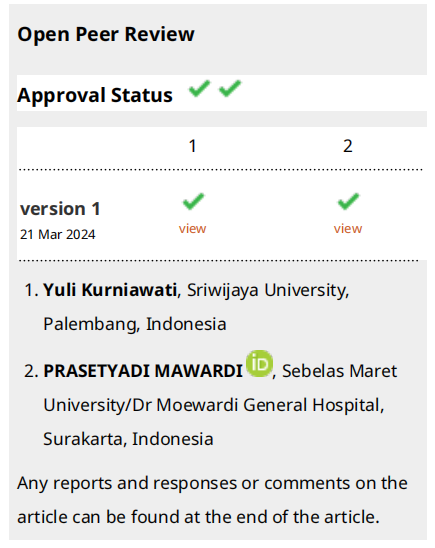
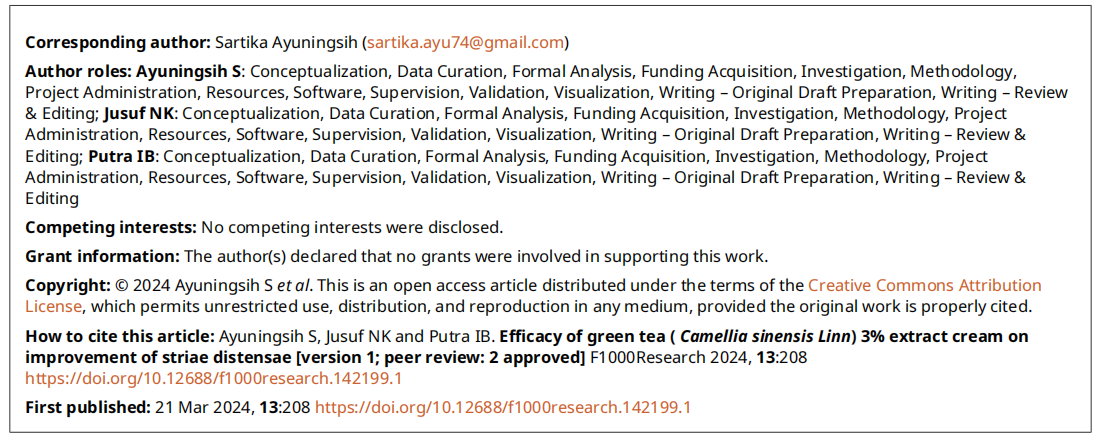
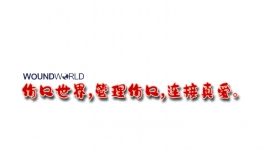
- 星期一, 10 2月 2025
A qualitative exploration of the prospective acceptability of the MiDerm app; a complex digital intervention for adults living with skin conditions
Rachael M. Hewitt1 | Carys Dale1 | Catherine Purcell1 | Rachael Pattinson2 | Chris Bundy1
1 School of Healthcare Sciences, Cardiff University, Wales, UK
2 School of Dentistry, Cardiff University, Wales, UK
Correspondence
Rachael M. Hewitt, School of Healthcare Sciences, Cardiff University, Heath Park Campus, Cardiff, CF14 4XN, UK.
Email: 该Email地址已收到反垃圾邮件插件保护。要显示它您需要在浏览器中启用JavaScript。
Funding information
Beiersdorf
Abstract
Objectives: Skin conditions carry a substantial psychological burden but support for patients is limited. Digital technology could support patient self-management; we found preliminary evidence for the effectiveness and acceptability of digital psychological interventions for adults living with skin conditions. We have, therefore, developed a complex digital intervention called MiDerm with patients. This qualitative study explored the prospective acceptability of the complex intervention delivered via a smartphone application (app), and possible barriers and facilitators to use.
Design: Qualitative research involving a hybrid inductivedeductive approach. Data collection and analysis were theoretically informed by The Common-Sense Model of SelfRegulation, Theoretical Framework of Acceptability and the Capability, Opportunity, Motivation - Behaviour Model.
Methods: Eight synchronous online group interviews with 43 English-speaking adults (≥18 years) with skin conditions. Data were analysed using Reflexive Thematic Analysis.
Results: Three superordinate themes were generated: (1) Patients' attitudes and concerns about the MiDerm app; (2) Need for personal competence, autonomy and relatedness for effective self-management; and (3) Physical, psychological and social barriers to app use.
Conclusion: Adults with skin conditions, mainly those with vitiligo and psoriasis living in the UK, expressed the need for support to self-manage the psychological aspects of their condition(s). The idea of a new intervention comprised of informational, emotional, behavioural and peer support, delivered via a smartphone app was welcomed and may be especially beneficial for specific patients. Identified barriers must be addressed to maximize engagement and giving users choice, flexibility and control is imperative to this. We have since developed the MiDerm app using these findings.
KEYWORDS
dermatology, digital intervention, qualitative research
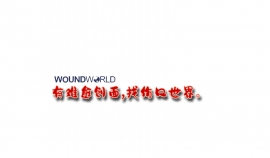
- 星期六, 08 2月 2025
A comprehensive classification and analysis of oily sensitive facial skin: a cross-sectional study of young Chinese women
Xinjue Kuang1,2, Caini Lin1,2, Yuanyuan Fu3, YuhuiWang3, JunhuaGong3, Yong Chen3,4, Youting Liu3,4,6 & FanYi1,2,5
1 Key Laboratory of Cosmetic, China National Light Industry, Beijing Technology and Business University, Beijing,China.
2Institute of Cosmetic Regulatory Science, Beijing Technology and Business University, Beijing, China.
3 Beijing Uproven Medical Technology Co. LTD, Beijing, China.
4 Beijing Uproven Institute of Dermatology, Beijing,China.
5 Beijing Technology and Business University, No.11/33, Fucheng Road, Haidian District, Beijing 100048,China.
6 Beijing Uproven Institute of Dermatology, Room 1109, 11th Floor, Building 13, No. 5 Tianhua Street, Daxing District, Beijing 102600, China. email: 该Email地址已收到反垃圾邮件插件保护。要显示它您需要在浏览器中启用JavaScript。; 该Email地址已收到反垃圾邮件插件保护。要显示它您需要在浏览器中启用JavaScript。
Oily sensitive skin is complex and requires accurate identification and personalized care. However, the current classification method relies on subjective assessment. This study aimed to classify skin type and subtype using objective biophysical parameters to investigate differences in skin characteristics across anatomical and morphological regions. This study involved 200 Chinese women aged 17–34 years. Noninvasive capture of biophysical measures and image analysis yielded 104 parameters. Key classification parameters were identified through mechanisms and characteristics, with thresholds set via statistical methods. This study identified the optimal ternary value classification method for dividing skin types into dry, neutral, and oily types based on tertiles of biophysical parameters and, further, into barrier-sensitive, neurosensitive, and inflammatory-sensitive types. Oily sensitive skin shows increased sebum, follicular orifices, redness, dullness, wrinkles, and porphyrins, along with a tendency for oiliness and early acne. Subtypes exhibited specific characteristics: barrier-sensitive skin was rough with a high pH and prone to acne; neurosensitive skin had increased TEWL (Transepidermal Water Loss) and sensitivity; and inflammatory-sensitive skin exhibited a darker tone, with low elasticity and uneven redness. This study established an objective classification system for skin types and subtypes using noninvasive parameters, clarifying the need for care for oily sensitive skin and supporting personalized skincare.
Keywords Oily sensitive skin, Noninvasive biophysical testing, Skin classification, Sensitivity subtypes, Personalized skincare
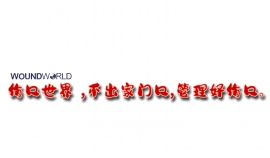
- 星期五, 07 2月 2025
Senomorphic activity of a combination of niacinamide and hyaluronic acid: correlation with clinical improvement of skin aging
Patrick Bogdanowicz 1,4*, Paul Bensadoun 2,4, Maïté Noizet 1 , Benoît Béganton 1 ,Armony Philippe 1 , SandrineAlvarez‑Georges 1 , Gautier Doat 3 , AmélieTourette 1 ,Sandrine Bessou‑Touya 1 , Jean‑Marc Lemaitre 2*& Hélène Duplan 1
1 R&D Pierre Fabre Dermo-Cosmétique & Personal Care, Toulouse, France. 2 INSERM IRMB UMR1183, Hôpital Saint Eloi, Université de Montpellier, Montpellier, France. 3 Laboratoires Dermatologiques Avène, Lavaur, France. 4These authors contributed equally: Patrick Bogdanowicz and Paul Bensadoun.*
email: 该Email地址已收到反垃圾邮件插件保护。要显示它您需要在浏览器中启用JavaScript。; 该Email地址已收到反垃圾邮件插件保护。要显示它您需要在浏览器中启用JavaScript。
Intrinsic and extrinsic factors, including lifestyle and sun exposure, can contribute to cell senescence, which impairs skin homeostasis, that may in turn lead to skin aging. Senescent cells have a specifc secretome, called the senescence-associated secretory phenotype (SASP) that includes MMPs, CXCLs and S100A8/9. Reducing the SASP with senotherapeutics is a promising strategy to reduce skin aging. Here we evaluated the effect of a formula containing niacinamide and hyaluronic acid, which are known to limit senescence and skin aging. We conducted three diferent studies. (1) Ex vivo explants treated with the formula had more collagen and glycosaminoglycan. (2) In a clinical trial with forty-four women, two months of treatment improved fne lines, wrinkles, luminosity, smoothness, homogeneity, and plumpness. (3) In a third study on thirty women, we treated one arm for two months and took skin biopsies to study gene expression. 101 mRNAs and 13 miRNAs were differentially expressed. We observed a likely senomorphic effect, as there was a decrease in many SASP genes including MMP12 and CXCL9 and a significant downregulation of autocrine signaling genes: S100A8 and S100A9. These pharmaco-clinical results are the first to demonstrate the senomorphic properties of an effective anti-aging formula in skin.
